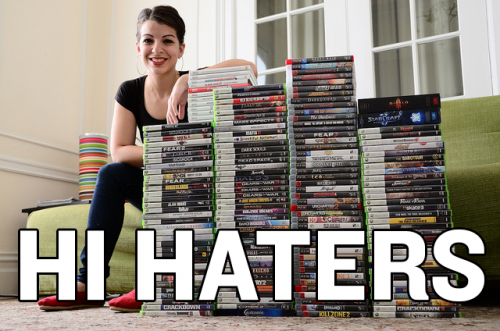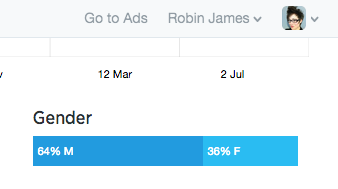
I want to think about the relationship two recent-ish articles draw between big data and social “harmony.” Why is big data something that we think is well-suited to facilitate a harmonious society? Or, when we think about applying big data to the control and regulation of society (which is something distinct from, but which can overlap with, the legal control and regulation of the state and its citizens), why is “harmony” the ideal we think it will achieve? Why is a data-driven society a “harmonious” society, and not, say a just society or a peaceful society or a healthy society? Why “harmony” and not some other ideal?
Last month in Foreign Policy, Shane Harris wrote about Singapore’s Risk Assessment and Horizon Scanning (RAHS) project. This project is already in place, sniffing out possible terrorist or public health threats. But, in response to recent election results in which the ruling party received less than near-unanimous support (which is interpreted as a sign of social discord), the government has extended the reach of this program
to analyze Facebook posts, Twitter messages, and other social media in an attempt to “gauge the nation’s mood” about everything from government social programs to the potential for civil unrest. In other words, Singapore has become a laboratory not only for testing how mass surveillance and big-data analysis might prevent terrorism, but for determining whether technology can be used to engineer a more harmonious society. [emphasis mine]
This isn’t just about predicting unruly and disruptive behavior, like bombing a public event. It’s about tuning the general mood to minimize social discord. The aim is to temper everyone’s temper, to monitor and influence not just what people do, but how they feel. And “harmony” is the metaphor Harris and others use to describe the status of a society’s affective temperament, its “national mood.” (Why is harmony the preferred metaphor for affect? Well, I’ve got a paper about that here.)
Harris emphasizes that Singaporeans generally think that finely-tuned social harmony is the one thing that keeps the tiny city-state from tumbling into chaos. [1] In a context where resources are extremely scarce–there’s very little land, and little to no domestic water, food, or energy sources, harmony is crucial. It’s what makes society sufficiently productive so that it can generate enough commercial and tax revenue to buy and import the things it can’t cultivate domestically (and by domestically, I really mean domestically, as in, by ‘housework’ or the un/low-waged labor traditionally done by women and slaves/servants.) Harmony is what makes commercial processes efficient enough to make up for what’s lost when you don’t have a ‘domestic’ supply chain.
***
This situation of scarcity–indeed, austerity after the loss of mothers’s work, mother nature’s work in providing food, water, and energy–is exactly what’s depicted in the much-thinkpieced film Snowpiercer. There, the whole human species is stuck on a train that circles the frozen, sterile earth. Everything–food, water, energy–must come from the train itself, because the earth can no longer be exploited for resources (so instead, the train exploits people more explicitly than when we’ve got nature and people to exploit). In order for this setup to work, everything, especially and including the population of humans, must be curated in a careful balance. This isn’t just population management, but the carefully curated balance among different parts of the population. As the film repeatedly emphasizes, the train will work only if everyone stays in their assigned place and does only what that station requires. In other words, social harmony exists when all the parts of the community are in proper proportion.
This idea of social harmony as proportion among parts is straight outta Plato’s Republic: remember the myth of the metals, the division of society into gold, silver, and bronze? The ideal city, for Plato, was one that embodied the proper proportion among its parts. Not coincidentally, ancient Greeks thought musical harmony was also the expression of proportional relationships among the parts of a musical instrument. So, in Plato as in Snowpiercer, social harmony was a matter of proportionality. But Snowpiercer implies that this idea(l) of harmonic proportionality is something much more contemporary than Plato. With Tilda Swindon’s obvious Margaret Thatcher cariacture as this ideology’s main mouthpiece, the film implies that proportional social harmony is the idea(l) that informs Thatcher-style neoliberalism.
As I have argued before, this neoliberal upgrade on Plato is also, as Jacques Ranciere argues, the ideal that informs data science. He argues:
The science of opionion…this process of specularization where an opinion sees itself in the mirror held up by science to reveal to it its identity with itself…It is the paradoxical realization of [Platonic metaphysics and archipolitics]: that community governed by science that puts everyone in their place, with the right opinion to match. The science of simulations of opinion is the perfect realization of the empty virtue Plato called sophrosune: the fact of each person’s being in their place, going about their own business there, and having the opinion identical to the fact of being in that place and doing only what there is to do there” (Disagreement 105-6).
Data science (what Ranciere calls the “science of opinion,” i.e., the science of opinion polls, which we can also call the science of the “national mood”) is the tool that allows us to listen for, measure, and maintain a particularly neoliberal kind of social harmony. Not harmony as proportion, but harmony as dynamic patterning. Dynamic patterning is how contemporary physics understands sound to work: sound is the dynamic patterning of pressure waves. Dynamic patterning is also what data science listens for–the patterns that emerge as signal out of all the noise.
So, what I want to suggest is that what Alex Pentland calls “social physics” or, “the reliable, mathematical connections between information and idea flow…and people’s behavior” (2), is modeled–implicitly–on the physics of sound. Instead of a geometric mathematics of proportion, social physics is a statistical mathematics of emergence or “dynamic patterning,” to use Julian Henrique’s definition of “sounding.” For example, Pentland says “there are patterns in these individual transactions that drive phenomena such as financial crashes and Arab springs” (10); the role of social physics is to find these patterns, “analyzing patterns within these digital bread crumbs” (5) to find the signal amid a bunch of data-noise. “Social Physics” updates the idea of the “harmony of the spheres” for the 21st century: this harmony is just statistical not geometric, grounded in contemporary acoustics instead of ancient philosophy.
I’m still working my way through Pentland’s book, but for now I want to turn to Nicholas Carr’s review of it. Carr’s review consistently relies on sonic metaphors to describe the “social physics” Pentland theorizes. For example, in the introductory paragraph, Carr notes that Marshall McLuhan “predicted that the machines eventually would be deployed to fine-tune society’s workings” (emphasis mine). Or later, summarizing Pentland’s argument, Carr writes:
If people react predictably to social influences, then governments and businesses can use computers to develop and deliver carefully tailored incentives, such as messages of praise or small cash payments, to “tune” the flows of influence in a group and thereby modify the habits of its members.
What’s getting tuned? As above in Singapore, people’s moods and affects are what social physics listens for and tunes. As Carr notes, Pentland’s studies “measure not only the chains of communication and influence within an organization but also “personal energy levels” and traits such as “extraversion and empathy.””
As Carr reports it, tuning these affects and moods–people’s ‘opinions’ rather than just their actions–is what leads to a harmonious society: “group-based incentive programs can make communities more harmonious and creative. “Our main insight,” [Pentland] reports, “is that by targeting [an] individual’s peers, peer pressure can amplify the desired effect of a reward on the target individual.””
***
Positive or negative reinforcement of behavior through peer pressure…hmmm…this sounds a whole lot like what JS Mill advocates in Chapter 4 of On Liberty. This chapter is about the “limits of the authority of society over the individual.” Here, Mill argues in language that should clearly resonate with the above discussion of Plato & Snowpiercer:
Each [individual and society] will receive its proper share, if each has that which particularly concerns it. To individuality should belong the part of life in which it is chiefly the individual that is interested; to society, the part that chiefly interests society (69).
So what interests the individual, and what interests society? Well, the individual is interested in things that affect him and nobody else (that’s what the first three chapters argue); society is interested in optimizing its health. According to Mill, laws protect individual liberty; they limit individuals and the government from interfering in things in which it is chiefly the individual that is interested. However, as Mill notes, “The acts of an individual may be hurtful to others, or wanting in due consideration for their welfare, without going to the length of violating any of their constituted rights. The offender may then be justly punished by opinion, though not by law” (69). Opinion is how society manages behaviors it cannot and ought not prohibit or require, but nevertheless needs to encourage or discourage: “In these modes a person may suffer very severe penalties at the hands of others for faults which directly concern only himself; but he suffers these penalties only in so far as they are the natural and, as it were, spontaneous consequence of the faults themselves, not because they are personally inflicted on him for the sake of punishment (72). Arguing that the negative consequences of being out of synch with dominant mood or opinion are the direct effect of discordant behavior, Mill rationalizes his way out of the liberal principle of non-interference by blaming the victim. Society can regulate individuals in this way because they were asking for it, more or less. He concludes, “Any inconveniences which are strictly inseparable from the unfavorable judgment of others, are the only ones to which a person should ever be subjected for that portion of his conduct and character which concerns his own good, but which does not affect the interests of others in their relations with him” (72).
Mill has recognized that the liberal principle (the law can interfere with individual liberty only in matters that have an affect on society), if followed strictly, would lead to social upheaval. So, in order to maintain the status quo–e.g., white bourgeois standards of behavior, taste, comportment, gendered behavior, etc.–the law (“reprobation which is due to him for an offense against the rights of others” (73) needs to be supplemented by opinion, by the “loss of consideration a person may rightly incur by defect of prudence or personal dignity” (73).
But how does Mill relate to social physics and the science of opinion? Well, it seems like data science, in tracking and tuning people’s moods and affects, it’s doing the work of opinion-regulation that Mill thinks is necessary for ‘social harmony.’ Indeed, as Carr points out, social physics “will tend to perpetuate existing social structures and dynamics. It will encourage us to optimize the status quo rather than challenge it.”
In both Harris’s article and Pentland’s book, concepts of individual liberty are seen as things that impede this harmony, or rather, they impede our ability to listen and adjust for this harmony. According to Harris, “many current and former U.S. officials have come to see Singapore as a model for how they’d build an intelligence apparatus if privacy laws and a long tradition of civil liberties weren’t standing in the way” (emphasis mine). Similarly, Pentland argues that, given what a more Marxist theorist would call the current relations of production, i.e., the current state of material-technical existence, “we can no longer think of ourselves as individuals reaching carefully considered decisions; we must include the dynamic social effects that influence individual decisions” (3). So “harmony” is a way of describing the overall behavior of a population, the concord or discord of individuals as they intertwine with and rub up against one another, as their behaviors fall in and out of synch.
Mill has already made–in 1859 no less–the argument that rationalizes the sacrifice of individual liberty for social harmony: as long as such harmony is enforced as a matter of opinion rather than a matter of law, then nobody’s violating anybody’s individual rights or liberties. This is, however, a crap argument, one designed to limit the possibly revolutionary effects of actually granting individual liberty as more than a merely formal, procedural thing (emancipating people really, not just politically, to use Marx’s distinction). For example, a careful, critical reading of On Liberty shows that Mill’s argument only works if large groups of people–mainly Asians–don’t get individual liberty in the first place. [2] So, critiquing Mill’s argument may help us show why updated data-science versions of it are crap, too. (And, I don’t think the solution is to shore up individual liberty–cause remember, individual liberty is exclusionary to begin with–but to think of something that’s both better than the old ideas, and more suited to new material/technical realities.)
***
Big data, social physics, Snowpiercer, Plato, JS Mill–on the one hand this post is all over the place. But what I’ve tried to do is unpack the ideals that inform and often justify/rationalize data science forays into social management, to show just what kind of society data science thinks it can make for us, and why that society might be less than ideal.
[1] Harris writes, “Singapore’s 3.8 million citizens and permanent residents — a mix of ethnic Chinese, Indians, and Malays who live crammed into 716 square kilometers along with another 1.5 million nonresident immigrants and foreign workers — are perpetually on a knife’s edge between harmony and chaos.”
[2] “It is, perhaps, hardly necessary to say that this doctrine is meant to apply only to human beings in the full maturity of their faculties…We may leave out of consideration those backward states of society in which the race itself may be considered in its nonage…Despotism is a legitimate mode of government in dealing with barbarians” (14).













